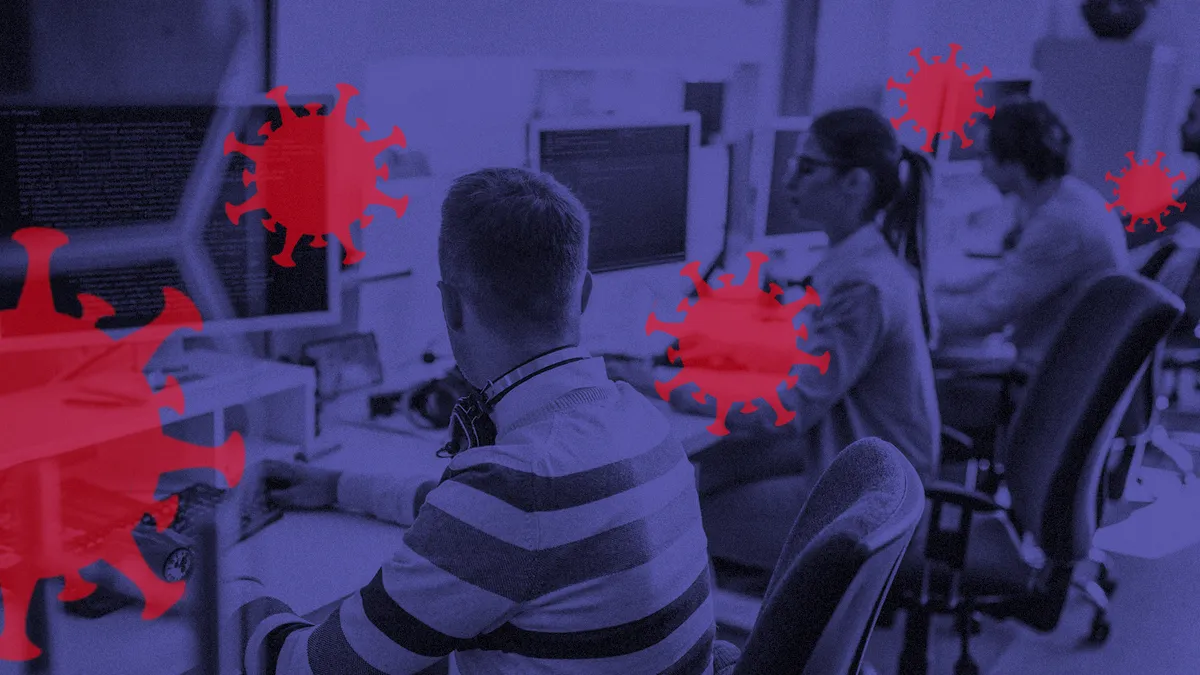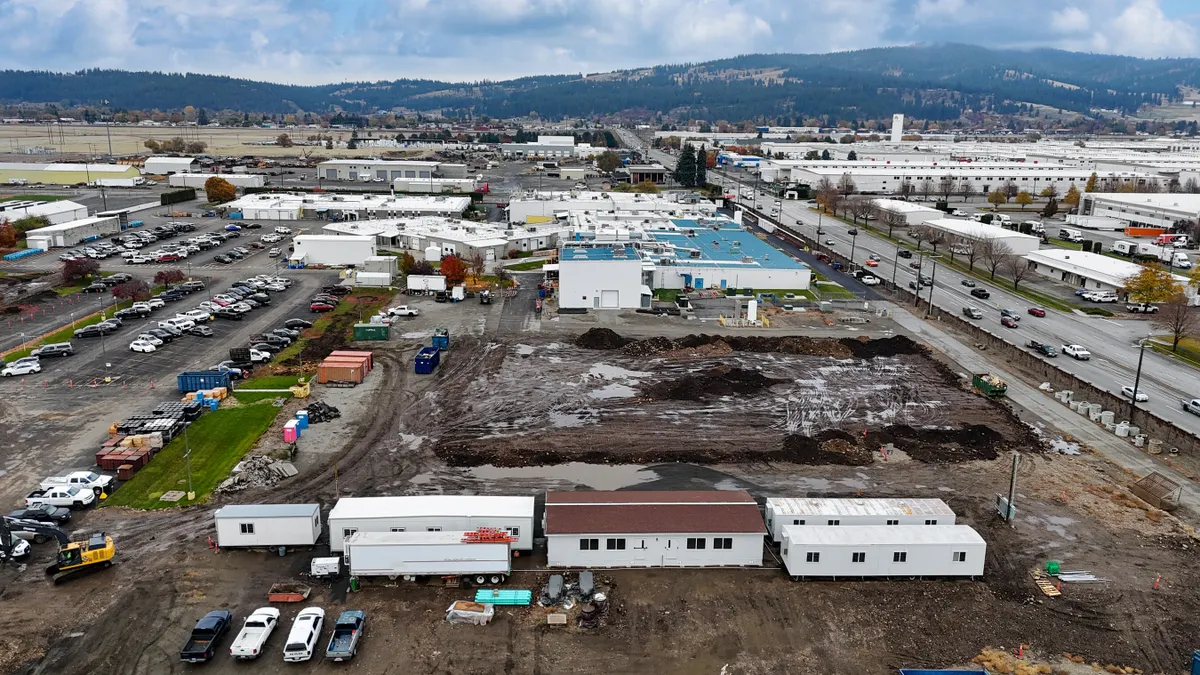Countries and individual states are beginning to reopen after weeks of stay-at-home orders. What remains are questions about how to proceed, what should reopen and what businesses should remain remote. Officials are creating the playbook on the fly, but a chief consideration is how to maintain physical distancing to reduce the risk of spreading COVID-19.
Some organizations are turning to contact tracing applications, which would free up population movement with more peace of mind. These tools can target the broader population or individual companies.
The public-facing contact tracing application under development by Apple and Google relies on Bluetooth technology to determine the proximity of nearby smartphones, alerting participants to possible exposure. The application requires user opt in and user identity is not shared with Apple and Google. That information is left to public health authorities.
Read more about the black, white and gray of privacy and public health concerns here.
Google and Apple's effort is a public-facing approach that relies on user opt-in and engagement. For some, that tactic wades into a minefield of privacy and cybersecurity concerns.
The Bluetooth technology does not guarantee accurate results. For example, one COVID-19-infected person could jog on a popular trail. They might encounter hundreds of people, yet maintain their distance, according to Matt Calkins, CEO and founder of low-code automation platform provider Appian. But a contact tracing application would signal those people could be at risk.
"The rate of false positives and the rate of paranoia that's going to be spawned by an application like that is crazy," Calkins said, in an interview with CIO Dive. "I prefer a more intelligent approach to this by far — the public stuff is just going to heighten mistrust and fear."
That's where the corporation comes in. Organizations are within their right to know who enters a workplace and dictate office gatherings without as many privacy concerns. From applications to enterprise-focused contact tracing, technology companies are creating solutions to facilitate a safe return to work.
Companies are trying to determine the controls — and timing — for a return to the office, considering waves of returns, alternate scheduling and continued closure of shared common spaces.
Organizations are trying to understand if going back to the office means "putting everyone in plastic bubbles," said Rob Mesirow, partner and connected solutions/IoT leader at PwC, in an interview with CIO Dive. It's the "obligation of the employer to care for and protect the wellbeing of the employee."
3 offerings, 3 approaches
The proper approach for enterprise tool deployment is in the eyes of the beholder. Effective deterrents and deployment methods are better studied and observed once the crisis abates.
As conversations turn to reopening, companies are mapping out plans to return to the office. Technology companies have leapt to offer tool suites to try to make reopening easier. Each takes a different approach but tackles the same problem: how to navigate the new normal office return.
PwC's enterprise contact tracing
The professional services firm released a toolkit called "Check-In," which includes a "Status Connect" offering to connect companies to their workforce and provide "a near real-time view of their productivity."
The other primary offering is automated contact tracing technology, which can identify risk exposure to someone who has tested positive for COVID-19. For it to work, companies can download an app or deploy the technology into a current enterprise app.
It relies on employee engagement. If employees feel symptoms or have a confirmed diagnosis, they will volunteer the information to HR.
Phones become observers and detect who is in the proximity of their device, relying on indoor geolocation technology, according to Mesirow. The technology operates within a geofenced area — such as an office building or campus — and the data is accessible on a dashboard by an HR professional.
PwC focused on the enterprise because it already had command, control, policies and procedures, Mesirow said. If an employee reports possible contact with someone who is COVID-19 positive, the organization can quickly trace who that person came into contact with and notify of high, medium or low risk.
Enterprise deployment also offers the option for mass deployment. The Fortune 500 companies employ 28.7 million people worldwide, often in dense, urban environments.
Flattening the curve in those high density population locations will have a big impact, Mesirow said. PwC's goal is to deploy the technology to 50 million devices, but wants to get closer to 100 million devices.
PwC began deploying the contact tracing solution in its offices (Mesirow's house also serves as a beta test). The company plans to make it commercially available this month.
Appian's application approach
A return to work isn't a simple switch flip, where employees return en masse. "It's going to be careful, steady, gradual, cautious, and with a great mind toward the privacy and the safety of employees," said Calkins.
So far, systems are all targeted toward who is so sick they're dangerous, as opposed to who should be the first few people back in the office, he said.
Last month, Appian released a "Workforce Safety and Readiness" application that includes a hub to manage health and work status of employees; an interface for employees to update personal health and risk data; and automated tools for a phased or rotating return to work.
There's a lesson in the crisis that organizations need to be able to adapt and change quickly, said Calkins. "It is important to be able to change. To have it within your power, your organization's power, to make a new policy, create a new program, alter your behavior quickly."
That means every organization will require a platform to help them manage and make changes quickly, according to Calkins. That demands visibility, employee engagement and trust.
Salesforce's Work.com Command Center
The COVID-19 crisis response is laid out in three phases, according to Kishan Chetan, of senior vice president of Products, Industries at Salesforce:
-
The first centered around quick response, with companies determining what tools were required to quickly react. Much of this required short-term solutions.
-
The second is about recovery and getting people back to work.
-
The third is the new normal, and creating a safe workplace before vaccines and cures are widely available.
Businesses are starting to enter the second phase as communities and businesses work to reopen the economy, Chetan told CIO Dive, a sister publication of Construction Dive.
Salesforce recently announced Work.com, which offers technology solutions and a central command center geared toward managing and monitoring a return to work. The solutions include employee wellness assessments, contact tracing, emergency response management and grants and volunteer management.
Rather than tracking people's movement, Salesforce's solutions through Work.com are focused on building contact tracers in an employment and community setting based on what information people volunteer, according to Chetan.
If employees are returning to work, they'll want to know if it's safe or if it's possible they're exposing loved ones. It's up to executives to communicate on a regular basis and a command center approach offers a holistic view, he said. With that comes some peace of mind.
The suite also has a forward-looking element. It will allow companies to manage emergencies beyond the current crisis, galvanizing different businesses and the public sector to "seriously plan and get ahead," Chetan said.
Privacy concerns persist
Contact tracing presents a rock and a hard place, in the enterprise and public sphere. While many countries have laws dictating privacy rules, culture dictates acceptance. In the enterprise, work and home life is blurred.
"Where do you put the line between the enterprise and the employee's life?" asked Erick Brethenoux, research vice president at Gartner.
Take the phone: If an a company deploys a mobile contact tracing app, it goes everywhere with an employee, who takes their phone with them through their corporate and personal life.
As long as an employee is in office hours, that data can apply, Brethenoux told CIO Dive. But office hours look a lot different than they did eight weeks ago before stay-at-home orders descended.
Contact tracing technology provides two key problems, Brethenoux said:
-
The data source. Can an organization gather that data, at that time, on that application? The rules differ from state to country.
-
Even if organizations have guardrails around applications and data, machine learning applications are great at triangulation. An organization could infer conclusions out of the research that may not respect privacy laws, even if that wasn't a concern when data collection began.
There is also the concern of who employees could come into contact with in their personal lives. A spouse might work in healthcare or once schools and childcare facilities reopen, a child could have unknown contact with a carrier.
That doesn't mean organizations can't deploy technology to try to help decrease the spread of COVID-19, particularly as states and countries begin to reopen.
Organizations have to be humble, Brethenoux said. "Humility and rigorous discipline can help the most" when it comes to the applications of technology.
"Have to be cautious and take the technology at face value to see what it can really do for us," he said.























